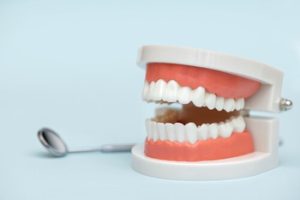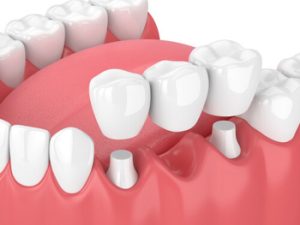Tooth loss affects more than your appearance. It can change how you chew, how you speak, and even how confident you feel. Dental bridges remain a trusted choice for those looking to address gaps in their smile. With various designs and materials available, understanding your options can help you make informed decisions. Whether you’re replacing a single tooth or several, choosing the right bridge is a key step toward long-term oral health. This guide explores the most common dental bridge types, the procedure involved, and how to keep your bridge in excellent condition.
What Are Dental Bridges?
Designed to stay in place, dental bridges restore missing teeth by anchoring artificial replacements to surrounding natural teeth or implants. They are custom-made to match the shape, size, and colour of your existing teeth, ensuring a natural and balanced appearance.
What Are the Different Types of Dental Bridges?
Understanding the types of dental bridges available allows you to match your needs with the right solution. Each option varies in design, material, and method of support.
Traditional Fixed Bridges
Traditional bridges are among the most widely used. They involve placing dental crowns on adjacent natural teeth to support the pontic teeth in between. This design is common when strong neighbouring teeth are available on both sides of the gap.
Cantilever Bridges
A cantilever dental bridge is used when support is available on only one side of the gap. These bridges anchor to one tooth and are often chosen when only one natural tooth is adjacent to the space. While they are not suitable for all locations, they work well in less forceful areas such as the front teeth.
Maryland Bridges
A Maryland bridge, also known as a resin bonded bridge, attaches artificial teeth to the back of surrounding teeth using metal or porcelain wings. This design preserves more of the existing teeth. Maryland bonded bridges are typically used when minimal alteration of the adjacent healthy teeth is preferred.
Implant Supported Bridges
Implant supported bridges are anchored by dental implants rather than natural teeth. This type is perfect for patients missing multiple teeth and is often used when surrounding teeth are not strong enough for support. An implant supported dental bridge is known for its strength, stability, and bone preservation benefits.
Temporary Dental Bridge
A temporary dental bridge is often used between appointments while the final bridge is being made. It protects the exposed area, helps maintain alignment, and allows you to function comfortably. Though not permanent, it plays a key role in the overall dental bridge procedure.
How Is a Dental Bridge Placed from Start to Finish?
The dental bridge procedure is usually completed over a few appointments and includes multiple stages to ensure the bridge fits securely and feels natural. Understanding what to anticipate at each step can help you feel confident throughout the process.
 Consultation and Evaluation
Consultation and Evaluation
The first step involves a detailed examination. Your dentist will assess your dental health, evaluate the missing tooth gap, and determine if a bridge is the right treatment. This may involve X-rays to check the condition of existing teeth and the underlying gum tissue.
The consultation also allows your dentist to discuss different types of bridges that may suit your needs. At this stage, you’ll be able to ask questions and learn what to expect during the treatment process.
Tooth Preparation
If a traditional or cantilever bridge is being placed, abutment teeth will be reshaped to hold crowns. This step is crucial for creating room for the bridge. Your dentist will then take impressions to be sent to a dental laboratory for custom fabrication.
To maintain comfort, local anaesthesia is used during preparation. The impressions help create a bridge that blends with your existing teeth in shape and colour.
Temporary Bridge Placement
While the new dental bridge is being created, a temporary bridge may be placed. This protects the prepared area and allows you to chew and speak normally. It also prevents shifting of adjacent teeth during the wait.
Temporary bridges are usually formed from lightweight materials like composite resin or acrylic to ensure comfort and function. Your dentist will advise you on how to care for this interim restoration until the final fitting.
Bridge Fitting and Adjustment
When your new dental bridge is ready, the dentist will check its fit, colour, and comfort. Adjustments will be made as necessary to ensure a natural bite and smooth surface. This stage ensures that the bridge integrates well with the surrounding teeth.
Your dentist may make small refinements to enhance your bite alignment. The goal is to create a seamless fit that feels natural and does not interfere with daily function.
Final Cementation
Once the bridge fits properly, it is permanently cemented into place. Your dentist will check your bite again and provide care instructions. At this point, your new dental bridge is fully functional and ready for daily use.
A follow-up appointment may be arranged to ensure everything remains comfortable after a few days of wear. Once in place, your bridge becomes a dependable part of your smile.
What Makes Dental Bridges So Helpful for Your Smile?
Dental bridges offer many benefits beyond just filling a space. They protect dental function, restore aesthetics, and improve overall health when maintained with proper care.
Restores Your Smile
Dental bridges offer a seamless solution for those looking to replace missing teeth. They help restore a complete smile, boosting your confidence in both personal and professional situations. With options that match your tooth shade, the results are natural-looking.
Having a full smile can improve the way others respond to you in social settings. Feeling good about your appearance can also have a positive effect on your mental wellbeing. Restoring your smile often encourages you to smile more freely and naturally.
Improves Chewing and Speech
Tooth loss can affect how you chew and pronounce words. A dental bridge restores function, allowing you to eat more comfortably and speak clearly. This improvement supports not just comfort but also long-term nutrition and communication.
Restored teeth help break food down more efficiently, which aids digestion. Speaking with gaps can lead to lisping or slurring, which bridges help correct. These improvements allow you to enjoy daily activities with greater ease.
Maintains Facial Structure
The absence of teeth may reduce facial support, which can change your appearance over time. By filling those spaces, a bridge helps stabilise your features and maintain a fuller, more youthful look. This benefit is especially noticeable in the case of multiple missing teeth.
Maintaining the underlying structure helps reduce signs of premature ageing. It also improves how dentures or future dental work may fit if needed later. Bridges play a key role in preserving both function and facial symmetry.
Prevents Shifting of Teeth
Without a replacement, adjacent teeth can drift into the empty space. A dental bridge keeps adjacent healthy teeth in their proper positions. This helps maintain alignment and prevents bite problems or uneven wear.
Teeth that move out of position can become harder to clean, leading to plaque buildup. Shifting can also strain the jaw joints and create discomfort over time. A well-fitted bridge helps preserve your bite and overall balance.
Long-Lasting Solution
With proper dental hygiene and regular care, most dental bridges can last many years. Their durability makes them a dependable option for long-term dental restoration. Choosing a quality material, such as porcelain fused to metal, can extend their lifespan even more.
Bridges are designed to withstand daily use without compromising performance. Many people find that bridges remain stable for well over a decade. Investing in a durable option can reduce the need for frequent replacements.
 Supports Oral Health
Supports Oral Health
By filling the space left by a missing tooth, a bridge can help preserve gum health and reduce the risk of gum irritation. Preventing gaps also makes it easier to maintain good oral hygiene. Keeping a full set of teeth aids in overall dental function and comfort.
Bridges make it easier to clean between teeth and prevent food traps. Protecting the gum line from exposed areas lowers the chance of inflammation. A stable, complete bite encourages healthier habits and promotes long-term oral wellbeing.
What Daily Habits Protect Your Bridge Long-Term?
Taking care of your bridge is essential to keep it strong and clean. Good habits and regular check-ups can extend its life and protect your surrounding teeth.
Daily Brushing and Flossing
To extend the life of your dental bridge, consistent oral care is essential. Regular brushing and flossing remove debris and reduce the risk of issues around the bridge and nearby teeth. A floss threader or water flosser can help clean around and beneath the pontic teeth.
Use fluoride toothpaste to support enamel strength on surrounding teeth. Pay extra attention to the gumline, where bacteria can build up unnoticed. A clean mouth helps prevent inflammation and supports long-term comfort with your bridge.
Avoid Hard and Sticky Foods
Avoid biting directly into hard or sticky items that can loosen or damage your bridge. These types of foods may weaken the cement or affect the fit. Being cautious with your eating habits contributes to long-term success.
Try cutting crunchy fruits into small pieces instead of biting into them whole. Sticky lollies or caramel can tug at the edges and lead to early wear. Maintaining a softer diet for the first few weeks can also help the bridge settle in.
Regular Dental Visits
Routine dental appointments allow your dentist to check the integrity of your bridge. They can detect early signs of wear, decay near the abutment teeth, or damage to the metal framework. Professional cleanings help remove tartar and support gum health.
Routine check-ups help monitor any changes in your bite that could impact the bridge’s fit. Addressing small issues early can often avoid the need for major repairs later. Staying consistent with appointments ensures any concerns are addressed promptly.
Use a Night Guard if Needed
If you grind your teeth at night, a custom night guard can protect both your bridge and your natural teeth. Grinding can place stress on the restoration. Your dentist will advise if this is necessary based on your bite pattern.
Using a guard not only protects the bridge but also prevents jaw strain. It can help reduce morning headaches linked to clenching during sleep. Over time, it also extends the lifespan of both natural and restored teeth.
Maintain Overall Health
Good oral health supports the longevity of your bridge. This includes eating a balanced diet, drinking plenty of water, and addressing other issues such as dry mouth. Taking care of your body contributes to the health of your smile.
Conditions like diabetes or vitamin deficiencies can affect gum health and healing. Staying hydrated helps keep your mouth moist and decrease bacterial growth. Looking after your general wellbeing often shows first in your oral health.
 Follow Care Instructions
Follow Care Instructions
Your dentist will provide specific guidance tailored to your type of bridge. Follow these instructions closely, especially during the adjustment period. Proper dental bridge care ensures comfort and helps prevent further issues with the restored area.
Keep written instructions or post-treatment tips handy for easy reference. Ask questions if you’re unsure about brushing techniques or products to use. Clear communication with your dentist leads to better outcomes and fewer complications.
Find Out Which Dental Bridge Option Suits You
Dental bridges provide a reliable way to restore your smile, protect oral function, and support long-term dental health. With several types available, including traditional fixed bridges, cantilever bridges, and implant-supported options, there’s a solution to suit every patient. Whether you’re replacing one missing tooth or more, a well-fitted bridge can improve speech, comfort, and chewing ability. By following a consistent care routine and keeping up with check-ups, your new dental bridge can serve you well for many years. If you’re ready to explore your tooth replacement options, please call us on (02) 9159 6237 to book your consultation and get personalised advice for your smile.
References
https://www.healthdirect.gov.au/dental-bridge
https://www.colgate.com/en-us/oral-health/bridges-and-crowns/four-types-of-dental-bridges


 Consultation and Evaluation
Consultation and Evaluation Supports Oral Health
Supports Oral Health Follow Care Instructions
Follow Care Instructions